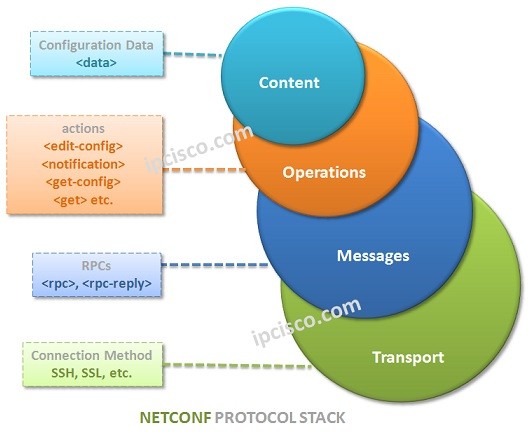- COURSES
- SPECIALS
- BLOG
- MEMBERS
- SHOP
- ABOUT
- ENROLL HERE

Table of Contents
NETCONF Operation has three common steps. These steps are:
Firstly, the Session is Established with the
messages. Both NETCONF Client and NETCONF Server send
message for the negotiation about their capabilities, supported models, versions etc.
After Session Establishment, Operation Request and Reply messages are sent. These messages are for specific operations. Here, the message used for Operation Request is send with
message and the Operation Reply is sent with
message. In other words, NETCONF Client sends its requests to the NETCONF Server with
message. And Server replies with
message.
Lastly, session is closed with
message. Client sends this message and the server replies back with
message.
We have talk about NETCONF Operation Steps and we saw the messages that are sent between NETCONF Client and NETCONF Server. Now, let’s check a little deeply and see the content of these messages.
First of all, let’s start with Hello messages. As you know, Hello messages establishes NETCONF session. These messages includes the capabilities of the sending device.
Now, let’s check Operational RPC Messages. There are two RPC Messages used in NETCONF. All these operations are done within these main messages. These RPC Messages are:
Now, let’s look at these messages content. These messages are XML based as we have mentined before.
rpc
As RPC message, for example, we can check the below message:
rpc-reply
As RPC Reply message, for example, we can check the below message:
The configuration modification is done via XML messages in NETCONF. Some of these XML messages are given below:

i have finised this course
Perfect!
finish
perfect!:)